At the GREEN Foundation, we are driven by a powerful vision: a world where vulnerable communities are climate resilient, and our sectors and systems operate with carbon neutrality. Our core mission centers on biodiversity conservation and regenerative agriculture, guided by agro-ecological principles and a deep respect for planetary boundaries. By combining these approaches, we are working towards a sustainable, equitable and resilient future. Together, we can create a world where people and the planet thrive together, safeguarding our natural resources for generations to come.
Preserve the Ecology
“It was worrying that farmers had lost the pride and sense
of ownership towards their own traditional knowledge.”
– Dr. Vanaja Ramprasad, Founding Trustee, GREEN Foundation
When GREEN Foundation initially started its work, we became aware that much of the indigenous knowledge and oral tradition had been lost within a few short decades. Moreover, farmers had lost a sense of pride in their own culture. This knowledge provided an invaluable understanding to sustainable practices that could greatly benefit the agricultural sector.
Our efforts have been focused on verifying, documenting and disseminating the centuries old indigenous knowledge of farmers. GREEN has used the Participatory Rural Appraisal method to document much of this oral tradition.
“Once, when I wanted to sow dodda jowar, a local variety of millet, I treated the seeds with a mixture of gandaka and tutte (local medicinal plants) soaked in water. After the seeds were completely dried, I decided to sow them. After sowing more than three-fourths of the land, I ran short of treated seeds. Hence I sowed the remaining land with the untreated seeds that I had brought along. When the crop was 3 feet high, it was attacked by smut disease and I realized that the portion of the crop with treated seeds was free from this disease. That is when I realized the importance of seed treatment,” says Shri Chouti of Chinnikatte village.
Many traditional practices like the one described by Shri Chouti hold vital clues to sustainability. We believe that forgotten cultural practices must be revived within the community so that farmers in the future may have access to this alternate, sustainable means of agriculture.
Ecological Reasons
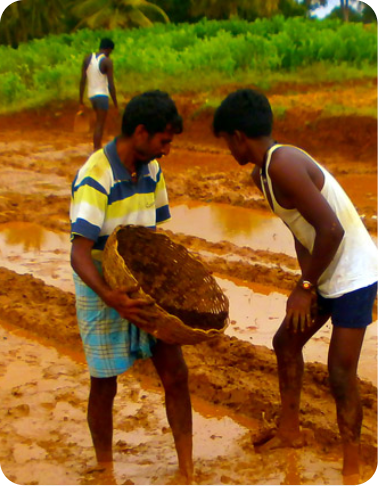
“We realized there was something wrong with this method of agriculture when the fertility of the soil began diminishing,” says Vijayamma, a farmer in Tamil Nadu, of the chemical farming methods her family used to practice until they were introduced to GREEN. For small-scale and marginal farmers like Vijayamma, this was particularly worrying, because land is their lifeline to food security.
“In spite of getting reduced yields the costs of cultivation had remained the same. But we did not know where to turn for help,” she adds.
With a large part of India’s land (nearly 49%) utilized in agriculture, unsustainable agricultural practices can lead to untold consequences for the country’s ecology. For example, it has been shown that a single acre of chemically grown sugarcane requires as much water as would suffice for 25 acres of indigenous variety maize (a crop that also enriches a farming household’s nutrient intake).
In light of facts such as these, it becomes clear the extensive change that can be brought about for India’s ecology through correct agricultural growth.
- SEED
- SOIL
- WATER
SEED
One of the first steps to preserving India’s ecology is the conservation of its agrobiodiversity. This begins, first and foremost with the conservation of indigenous variety seeds. By conserving the biodiversity of a region and encouraging the use of indigenous seed varieties that require low inputs, we aim to reduce the strain being felt on the region’s natural resources.
‘The loss of these indigenous varieties would mean the possible loss of a means to sustainable agriculture and its role in the conservation of the ecosystem as a whole’.
This importance of agrobiodiversity and its role in food security was well demonstrated in the early days of GREEN’s work. When drought hit some of the farmers in our operation area, they were surprised to note that the indigenous crop varieties we had encouraged them to grow were resilient and drought resistant. The exotic varieties on the other hand, introduced as high-yielding crops with the promise of larger incomes, had been destroyed.
Over the years, GREEN has worked extensively to conserve the rich agrobiodiversity of the country, spurred on by the steadfast belief that it is this biodiversity which holds the key to the future food security and ecological well-being of India. We have always sought to recognize the role of farmers as scientists whose experience can provide important clues to ecological conservation. Using participatory techniques (such as Participatory Crop Improvement) we have worked with them side by side experimenting, testing and implementing successful conservation practices.
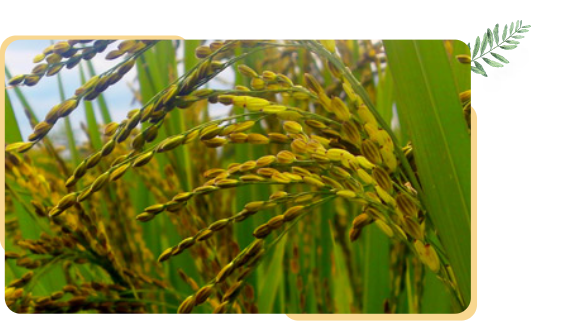
For its efforts in this area, GREEN received the prestigious Equator Initiative Prize from UNDP in 2004.
Economic Reason
Poverty in the Indian Agricultural Sector
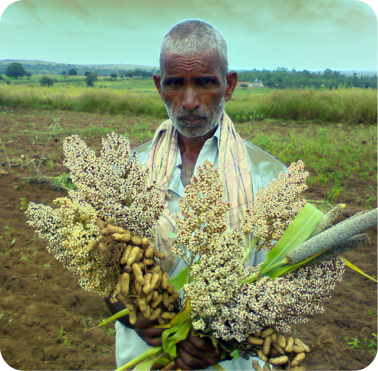
One of GREEN Foundation’s driving forces is to empower farmers to achieve economic security. We help farming households do this through various initiatives such as kitchen gardens, alternate income generating programs, community seed banks etc. We provide farmers with training in sustainable practices which reduces their dependency on expensive inputs.
We help organic farmers gain certification through the PGS system so that their produce is more marketable. To achieve this aim, we have also initiated the formation of Janadhanya, a society which aims to strengthen farmers’ economic security through the collective efforts of the community.
Over the years, as government policies encouraged the use of high-yielding exotic crop varieties introduced by the ‘Green Revolution’, many farmers took up the cultivation of these crops in the hopes of increasing incomes. Unfortunately, the high yields they attained did not necessarily translate into higher incomes or economic security for farming families. Cultivation of these exotic varieties inadvertently meant adopting cash intensive methods of farming that required high inputs. These inputs were often unaffordable to the small scale farmer and marginal farmers who make up more than 83% of all farmers in the country. In order to sustain this type of agriculture, many were then forced to take out loans in order to meet their expenses, leading them into debt. Trapped in a vicious cycle of unsustainable practices, they were facing the cold reality of hunger, malnutrition and economic insecurity.
“I had reached a stage when I was deeply in debt, owing to chemical farming and wanted to give up agriculture and go to the city in search of a job,” says Choode Gowda, a farmer in Karnataka. Like thousands around him, he was struggling to make ends meet. Read more on what farmers have to say.
Many of India’s poverty issues are directly linked to the plight of the farmer. Though nearly 52% of India’s labour force (some 250 million) is in agriculture, the sector makes up only 18.5% of the country’s GDP*. Our country’s growth and development in the modern world depends as much on its cities and towns as it does on the rural communities that make up a majority of its population. Tackling our country’s poverty concerns must therefore begin with empowering the Indian farmer. This fact has always been one of GREEN’s driving forces, and always will be.
Rise in Food Insecurity Due to Changing Agricultural Practices
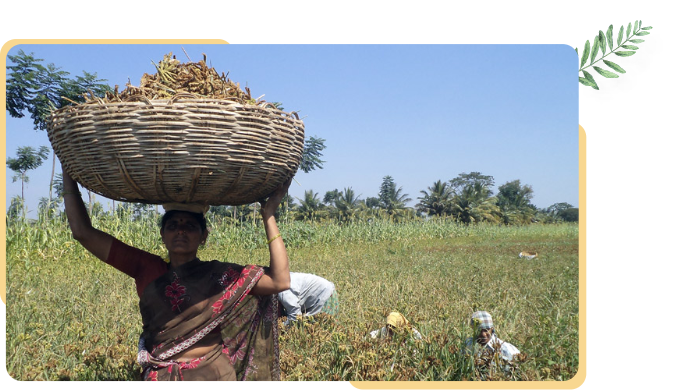
When farmers switched from the cultivation of traditional food crops like ragi to cash crops such as cotton, their daily diet also changed significantly. Many food crops used for personal consumption were not available to them after this shift in their cropping patterns, depriving their households of much-needed nutrition. Sadly, this shift in agricultural practices also resulted in a large scale loss of biodiversity in many areas because farmers simply stopped cultivating local seed varieties.
As the Great Famine of Ireland has historically shown, biodiversity is crucial to the food security of farmers and, indeed, the entire nation. GREEN’s efforts at strengthening this security include extensively promoting the use and conservation of indigenous seed varieties through various initiatives.
These varieties are most often food crops that the farmer can then use for personal consumption. They have a natural resilience to local conditions and this means that farmers are less likely to lose their harvests to unexpected, extreme weather changes. This is essential, particularly in the state of Karnataka (where much of GREEN’s work is based), as it is the 2nd most drought prone area in India. In fact, studies show 68% of the country is vulnerable to drought. There is another advantage to the use of these indigenous seed varieties: they have lead to a revival of traditional Indian agricultural practices that are inherently sustainable.
For farmers like Choode Gowda, whose families are threatened by food insecurity, these measures have proved extremely successful. “I was then exposed to organic agriculture and put the small piece of land I had to good use. I began to use traditional seeds, and also grew a variety of vegetables and fruits. Slowly, my financial condition improved and I have now been able to settle all the debts I had incurred.None of us needs to migrate now,” adds Choode Gowda.
Political Reasons
The research and development initiatives of the Green Revolution brought to the world, and particularly to India, a new, hybrid variety of seeds with the aim of increasing yields and reducing the food deficit of the country. They also introduced a chemical intensive form of agriculture highly dependant on external inputs that many farmers in India could ill afford. ‘Two decades of subsidizing agriculture with chemicals has impoverished the farmer and degraded the natural resources and diversity of food without reaching the goal of feeding the hungry.’
— Hidden Harvests, GREEN Foundation
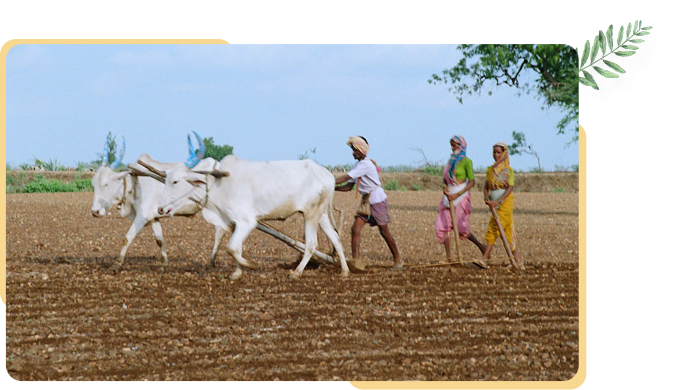
GREEN’s work has challenged the alleged benefits of this form of agriculture, raising urgent questions on the sustainability of these practices and their ability to ensure food security for the future. Close interactions with the community, has shown us the devastation caused through the widespread adoption of these practices. We have aimed to demonstrate through quantifiable results that a more viable form of agriculture, one which provides adequate food security for India’s small scale and marginal farmers, is possible.
Seeking Legislative Support
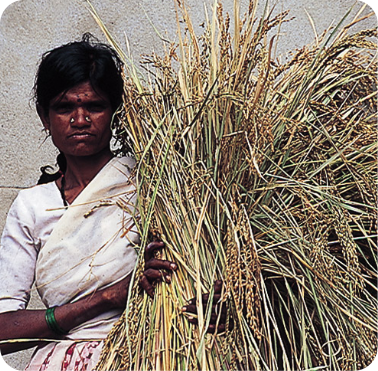
Lasting change can only be brought about through legislation that supports and protects the rights of individual farmers and strengthens their livelihoods. Such legislation must also aim to conserve the biodiversity and natural ecology that is essential to Indian agriculture. Yet over the years, Govt. policies have promoted the use of high yielding exotic seed varieties and the chemical inputs they require. Unfortunately, this has lead farmers to adopt unsustainable practices.
Through dialogue with key stakeholders, including the Government, GREEN has been lobbying for policy changes that encourage small scale and marginal farmers to pursue sustainable agriculture. GREEN has worked along with farmers to bring their concerns to the forefront of political dialogue. We have also appealed to the Government to highlight the role of women in Indian agriculture conservation.
Farmers are in many ways the backbone of the sector, and sustainability is not possible without their contributions, particularly in the case of biodiversity. Such progress owes as much to the perseverance of individual farmers themselves as to the collective efforts of a community of people within the non-profit sector. Strengthening the movement for sustainability, GREEN initiated the formation of Janadhayna, a farmers’ society which empowers farming communities to work collectively to avail the benefits of sustainable agriculture. Janadhanya has proved to be a means through which the movement has rapidly progressed, allowing community members themselves to take the core philosophy of organic practices to those who need it most: their fellow farmers.
Raising Awareness
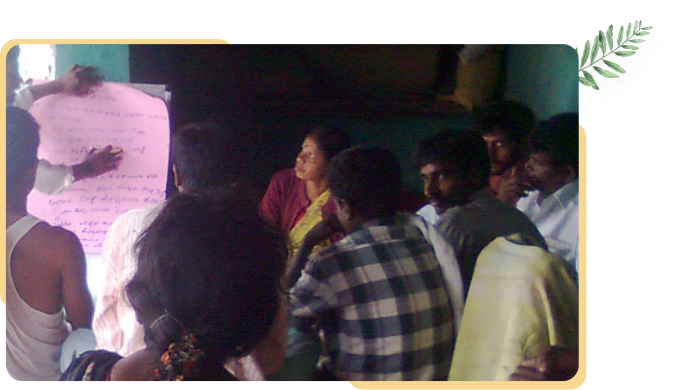
Fostering public awareness at a grassroots level has been essential in propelling the movement forward. GREEN initiates programs such as seed fares and yatras, which have proved a useful means of disseminating our core philosophy. Seminars and workshops on Government policy are held regularly held to sensitize farmers on issues directly concerning them.
We have also sought to increase general public awareness through radio programs, articles and regular columns in leading native-language newspapers. We recognize and encourage efforts of individual farmers who steadfastly uphold sustainable agricultural practices. ‘Beeje Maate’ Award was instituted for those farmers who have made outstanding contributions to seed conservation.
“We want to spread the message of organic agriculture far and wide. When people visit us, we always give them gifts of seeds so that they can carry the concept of organic farming into more and more areas.”
– Dr. Vanaja Ramprasad, Founding Trustee, GREEN Foundation
Dissemination of our message through publications has also helped strengthen the movement. Through innovative methodologies such as participatory rural appraisals we have also aimed to preserve and document the vast indigenous knowledge of the state of Karnataka.
Women’s Empowerment
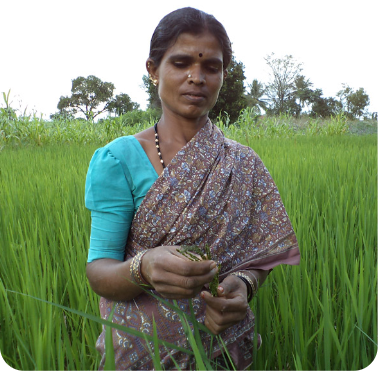
GREEN owes much of its early efforts to the initiative and dedication of a handful of women. It was with their help that we began our first efforts to empower the small scale and marginal farmers of India. In many ways, women have been the corner stone of GREEN and the driving impetus behind all of its work.
Recent studies in the gender division of labour in agriculture show that women do 37% of sowing, 59% of threshing and 69% of work related to animal tending*. Though they form a significant component of the workforce, the role of women in Indian agriculture has been unacknowledged. One of the biggest motivations behind GREEN’s work has been to bridge this gender gap. Therefore, in all of our work, we place great emphasis on the role of women in Indian agriculture.
Responsible, traditionally, for seed selection and storage, they are the custodians of biodiversity. Community Seed Banks initiated by GREEN in its efforts at biodiversity conservation, are managed mostly by women. GREEN has also empowered them to strengthen the food and economic security of their homes by facilitating the set up of kitchen gardens and alternate income generating programs. We have worked collectively with farmers to provide women with platforms which allow them to share their concerns and get involved in the decision making process of their communities.
Janadhanya, a farmer’s society initiated by GREEN, is one such platform. Village Development Committees (VDCs), which we facilitate, is another.
Though much has been accomplished, there is still more to be done if the gender gap is to be bridged. GREEN continues its effort to bring to the forefront, the crucial role played by women in the agricultural sector.